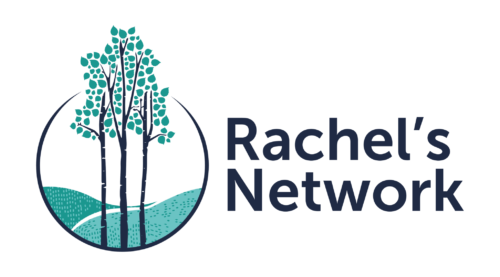During the Rachel’s Network Fall Retreat in Yellowstone National Park, our members were inspired by a presentation by sculptor and ecologist George Bumann who conveyed the value of wild places beyond the facts and figures we often fall back on. We asked George about his process, the experience of working in Yellowstone National Park, and his advice for inspiring a wonder for nature in others.
Why is it important to involve artists in conservation?
With something as wide, deep and diverse as the natural world, we need to draw upon all our faculties to communicate the wonders of the environment and the message of conservation. I feel art’s role is to expand awareness through the language of beauty. The phrase, “words don’t do it justice,” is oft heard and is precisely where the door to the arts swings open. Whether it’s painting, sculpture, architecture, music, performance, or literature, each medium speaks to a different facet of our world in a way that none of the others can. For me, the medium of choice is sculpture and the place is Yellowstone.
What do you like about sculpture in particular?
I’m drawn to sculpture largely on account of the tactile experience – I love the sensation of clay in my hands. Ask any child – that feeling of that soft medium squishing between clenched fingers is irresistible.
Sculpture has a very elemental thrill and it is one I was lucky enough to grow up with. In my mother’s studio, I learned the methods and materials of sculpture to the point where they became second nature. As children, my sister and I unwittingly asked friends when visiting their homes, “where is your mom’s studio?” – not realizing that other vocations existed! Later, when I struggled to express the awe I felt living in a place like Yellowstone, sculpture came to my rescue. It was a way to literally ‘get my hands onto’ something that I found deeply moving but could not pay homage to with words.
When did you decide to develop a presentation around your work?
I was amazed at how mysterious art, and the act of creating, seems to many people. I thought a program like this could help bridge a gap in understanding, and provide insight into the artistic process. What is the artist life like? What methods are used to make a piece of art? How does one make the journey from inspiration to creation? These are questions I hoped to shed light on. What started as a desire to share evolved into a process of clarifying and unraveling my own motivations. I ultimately hope to inspire people to pursue their own creative impulses. The arts are not just about making pretty things; they bring us to a deeper understanding, and connection with, the world around us.
What’s your favorite part about living next to an iconic National Park like Yellowstone?
I love Yellowstone’s diversity, and the level of passion it stirs in people from across the globe. Yellowstone is a beacon of hope for humanity’s relationship with nature. Diversity comes in many forms here, and it is not limited to biological richness alone – though I do love living with grizzly bears, gray wolves, bison and elk, etc. right out our back door! Be it geysers, mountain scenery, world class fly fishing, waterfalls, and more, there is something here for everyone. This accessibility of such grandeur leads people to a deep, abiding passion for this place. Whether you are ‘into nature’ or not, I find solace in the fact that visitors come prepared to find something new, something profound – something unexpected. And they leave with treasured memories that last a lifetime.
How does your background as a wildlife ecologist influence your work or process?
I am quite fortunate that my biological training, in particular, feeds seamlessly into my art. I see the arts and sciences as sister disciplines – each one seeking a better understanding of the world, one serving to systematize and predict patterns and the other to communicate why it is important. For example, to transmit the feeling of a close encounter with a grizzly bear, a background in anatomy is key. For viewers to see a sculpture with unintended physical distortions, it is akin to reading a piece of literature only to find spelling or grammatical errors; one ends up forgetting what the artist is trying to say and gets lost amid the misuse of the medium.
What in your career are you most proud of?
I am proud of those instances where I have been able to give back – financially or in-kind – to conservation projects in and around Yellowstone. For example, a portion of the sales of several of my sculptures support local conservation projects, such as reducing wolf-cattle conflicts and providing bear-proof storage containers for Park campgrounds.
On a more personal level, I am also deeply proud when my work – whether art or teaching – inspires other people to gain a deeper connection to wild places, and to themselves. To see the “light bulb” come on for someone – when something I’ve shared changes their relationship with nature, or helps them come to their own revelations – this is deeply gratifying. I am glad to pass on the gifts that others have given to me, including the confidence and inspiration to pursue those things that they care deeply about.
What advice would you give to people who want to tell better stories about the places they love?
When visiting special places, schedule private opportunities to reflect – time to unravel true meaning in your mind. Find a quiet place free from distraction to engage your creative impulses. Avoid creating anything “finished” or “presentable” if you can. Do it for your own edification alone. The point is to deepen your relationship with that place while simultaneously bringing your thoughts and senses into closer communion with its essence. Revel in the smallest nuances, the broader themes, eternal lessons, emotional connections, the contrasts and comparisons. From these (ideally, repeated) ruminations, the place will become more alive – more a part of you. And when you ultimately do speak of it, you will exude passion, radiate enthusiasm, and the rest of us will have no choice but to follow you along!


